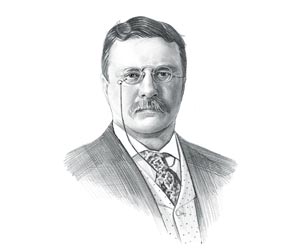|
|
|
|
|
The Anthracite Coal Strike of 1902 resulted in a victory for the hard-coal miners with a 10% increase in wages and an hours reduction in their working day.
Anthracite Coal Strike of 1902 for kids: What is Anthracite Coal?
Anthracite Coal Strike of 1902 for kids: Big Business and the Corporations
Anthracite Coal Strike of 1902 for kids: The Miners
Anthracite Coal Strike of 1902 for kids: Socialism
Anthracite Coal Strike of 1902: Background History - the
Mollie Maguires and the US Labor Unions
Causes of the
Anthracite Coal Strike of 1902 for kids
The Result of the
Anthracite Coal Strike of 1902
The Significance of the
Anthracite Coal Strike of 1902
For additional facts refer to the Progressive Movement and the article detailing Progressive Reforms at city, state and federal levels.
Great Anthracite Coal Strike for kids Statistics: In 1901 the output of anthracite coal totaled over 60 million long tons and generated 15% of America's energy Statistics: The value at the mines was estimated at $112 million dollars. Statistics: Between 1870-1901, the number of miners killed in the anthracite industry was 10,318 Statistics: Between 1870-1901 the number of miners injured totaled over 30,000 Statistics: In 1900, there were 143,824 miners working in the anthracite region The Unions: The United Mine Workers union (UMF) was founded on January 22, 1890 merging the Knights of Labor and the National Progressive Miners Union. The UMF was more open to compromise and arbitration with businessmen. The Unions: The Western Federation of Miners (WFM) was a more radical labor union that was founded in 1893. The WFM had strong ties to socialism and was far more radical than the UMF. On June 28, 1896 The Twin Shaft Disaster occurred in Twin Shaft Colliery in Pittston, Pennsylvania. A massive cave-in killed 58 miners. On September 10, 1897 the Lattimer Massacre saw the violent deaths of 19 unarmed striking immigrant anthracite coal miners at the Lattimer mine near Hazleton, Pennsylvania. 10,000 new members immediately joined the UMF The members of the UMF and the WFM united in their common cause and on May 12, 1902, 95% of the Pennsylvania miners went on strike demanding higher wages, a shorter working day, improved working conditions and the recognition of their union. John Mitchell was the Union organizer. Under Mitchell's leadership, the ranks of the union swelled from 34,000 to 300,000 members On June 2 1902 the maintenance workers, consisting of firemen, pumpmen and engineers, joined the minerís strike. On Friday, October 3, 1902, President Theodore Roosevelt intervened, worried that if the strike continued for too long, the nation would face a coal shortage that could close down the factories and leave homes cold in the approaching winter President Roosevelt said he feared "untold misery...with the certainty of riots which might develop into social war." The strike lost some of its impact when John Mitchell agreed to negotiate Mary Harris "Mother" Jones fought for unity among the strikers, opposing John Mitchell. The coal mine owners, led by George Baer, were determined to break the strike and rejected all union offers to conciliate on the grounds that there was nothing to talk about. Although he had no legal right to intervene, President Roosevelt sent telegrams to mine owners and the union summoning them to Washington to discuss the problem. President Roosevelt urged the union and the owners to accept arbitration President Roosevelt, and most of the public, were furious at the mine owners stubbornness in their refusal to negotiate. A precedent for arbitration and conciliation had been set by 1898 Erdman Act , although only to settle railway disputes. President Roosevelt believed arbitration was the way forward. President Roosevelt threatened to order the US army to run the mines and, under this threat, the mine owners finally accepted arbitration The anthracite coal strike ended, after 163 days, on October 23, 1902 John Mitchell considered the outcome a victory for the miners and the nation was spared a disastrous coal shortage |
| US American History |
| 1881-1913: Maturation Era |
|
|
|
|
|
First Published2016-04-19 | |||
|
Updated 2018-01-01 |
Publisher
Siteseen Limited
| ||
|
|

